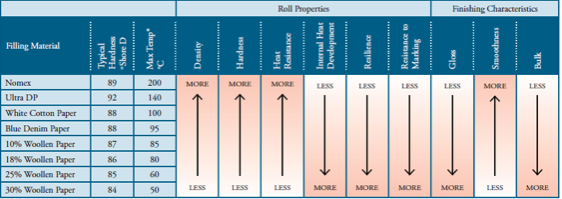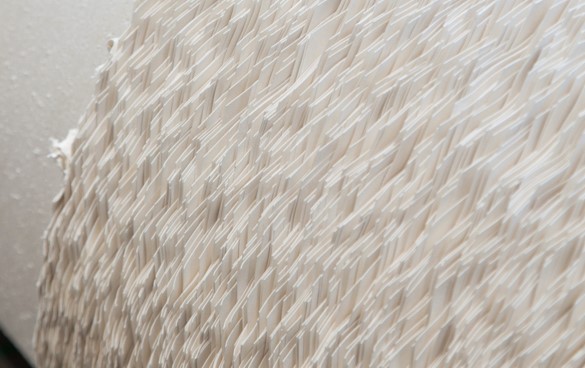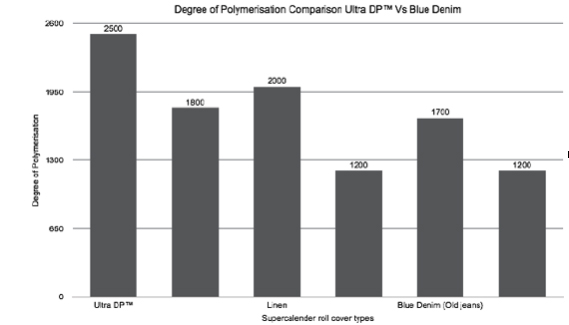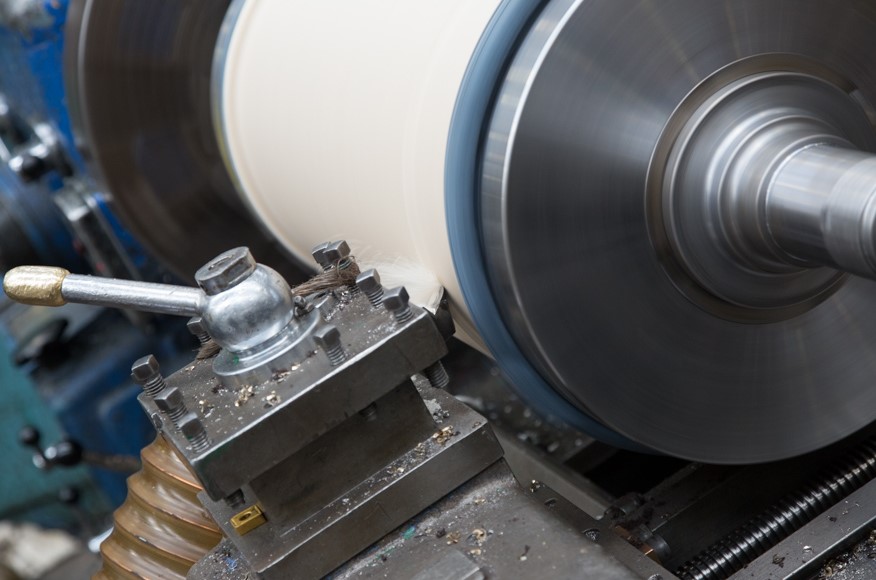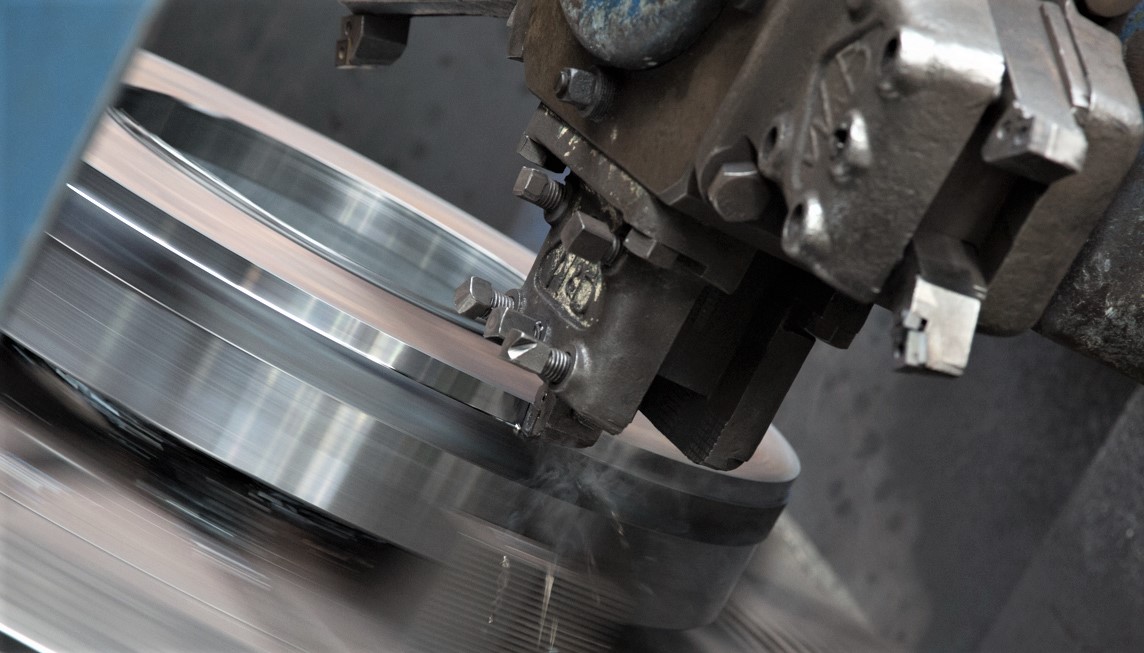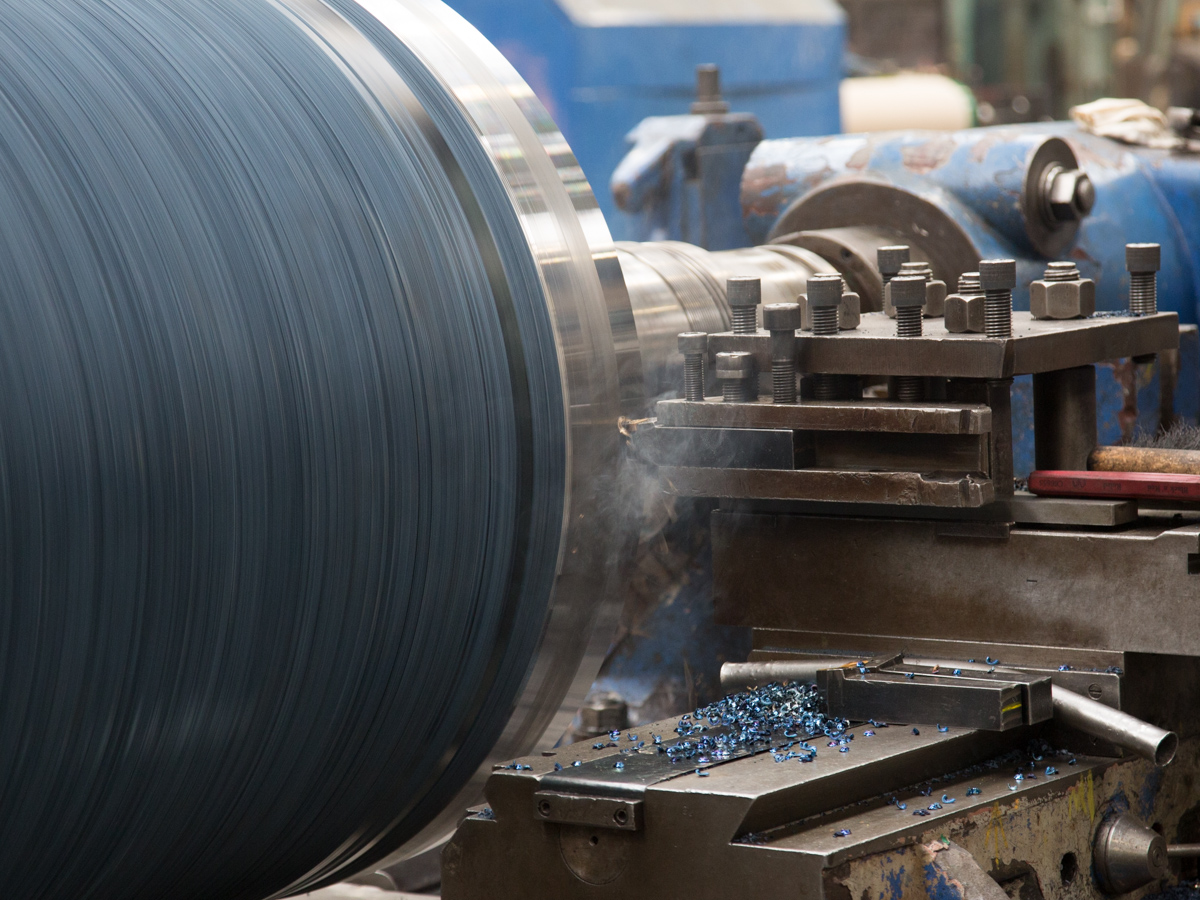Supercalendering rolls for the paper industry
We are specialists in the manufacture of complete new Supercalender Rolls (including steel centre shaft) or the refilling of your existing rolls.
Supercalender paper processing
Filling materials for Supercalendering
- Blue Denim Paper
- Woollen Paper – Rage from 10% – 45%
- Fiberun WBN (RHL´s Ultra DP)
- Challenge
Covers available for High temperature Calendering
- Fiberun WBN (RHL´s Ultra DP)
- Challenge™
- Simtex™
The Fiberun WBN (RHL´s Ultra DP) calender cover
Fiberun WBN (RHL´s Ultra DP) has the highest Degree of Polymerisation of any fibre calender cover. A combination of top-quality longest staple virgin fibres and traditional Hollander beaters give reduced embrittlement and greater dimensional stability compared to conventional cotton and blue denim calender bowl fillers. It will exhibit properties of longer life due to less embrittlement and more dimensional stability.
This translates to longer grinding intervals, or having to machine less material from the roll surface at regular grinding intervals.
Customers have previously seen savings of 50% lifetime compared with conventional blue denim fibre covers. This translates to, for example, only needing to remove 1,5mm diameter at grinding, rather than the usual 3mm with conventional covers.
Raw materials – Fiberun WBN (RHL´s Ultra DP)
Ground breaking technology – the most advanced fibre filling on the market.
Cotton that is processed in this way virtually eliminates contamination from such materials as polyester, synthetic rubber (Lycra), metal studs / rivets, zips and buttons etc. Necessity to use traditional Hollander / Beaters in order to preserve the full strength & length of fibres – minimise mechanical work to preserve the highest DP. No process chemicals have been used before it is made into paper.
Longest fibres with virgin cotton linters – this means the best heat transmission within the bowl cover & excellent dimensional stability of the roll cover giving prolonged contact with the roll shaft.
Fiberun WBN (RHL´s Ultra DP) vs BLUE DEMIN
Differences between Fiberun WBN (RHL´s Ultra DP) and BLUE DENIM
- Fiberun WBN (RHL´s Ultra DP) has a Bendsten porosity of over 2000 ml / min. this means that air passes through it relatively easily, due to the long staple virgin fibres.
- Blue denim has a Bendsten porosity of 600 ml / min., air passes through it satisfactorily.
- In calender bowl terms, an open sheet is a very desirable property because the paper presses sheet for sheet into a homogenous single mass. It takes a hammer and chisel to separate the sheets after pressing! A closed sheet means that each sheet stays separate even after pressing at 3000 tonnes!
- A roll that is made with sheets that are more closed will not conform to geometrical changes in the calender as naturally as an open sheet like the Fiberun WBN (RHL´s Ultra DP)
- An open sheet of paper Fiberun WBN (RHL´s Ultra DP) allows a much better heat distribution than a closed sheet.
Dynamic stability
- Potentially less removal per grind
- Less chance of hollowing
- More unison roll across the face
- Longer duration before signs of ageing
Advantages over Composite / Polymer rolls
- Unlike composite/plastic rolls, Fiberun WBN (RHL´s Ultra DP) can be used to upgrade your calender with the advantage of creating full friction gloss in the nip caused by micro-slip.
Why use Fiberun WBN (RHL´s Ultra DP)
- Cheaper
- No tendency to over-densify the paper surface
- Less risk due to larger usable diameter
- Easy to work with conventional technology
Advantages over Composite / Polymer rolls
- Better heat resistance
- Higher gloss or increased output (through increase in temperature / pressure or higher speed)
- Potentially longer duration in production
- High performance even at lower diameters

